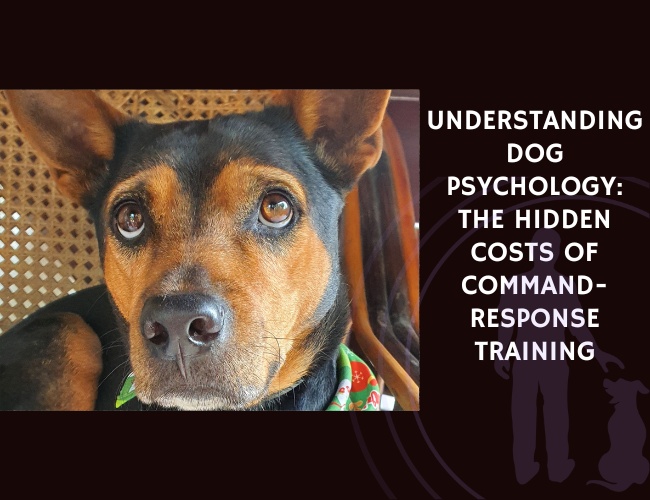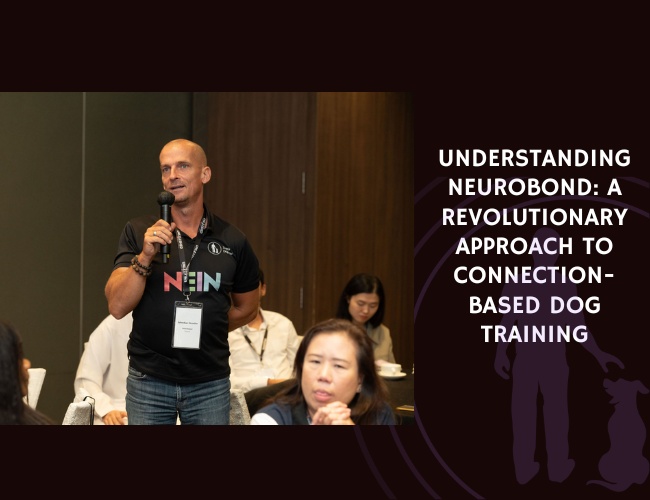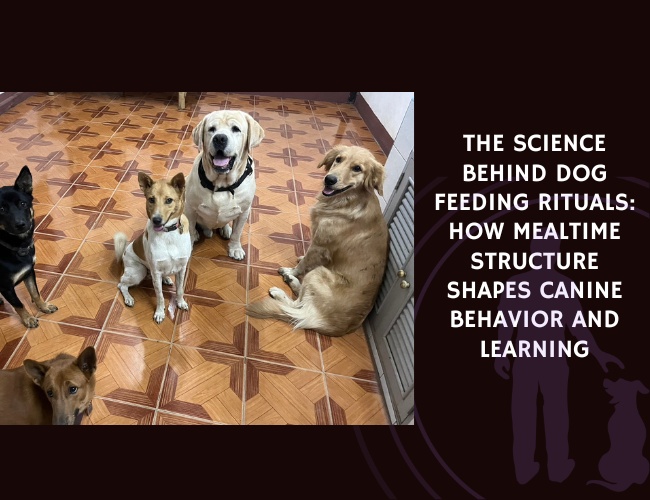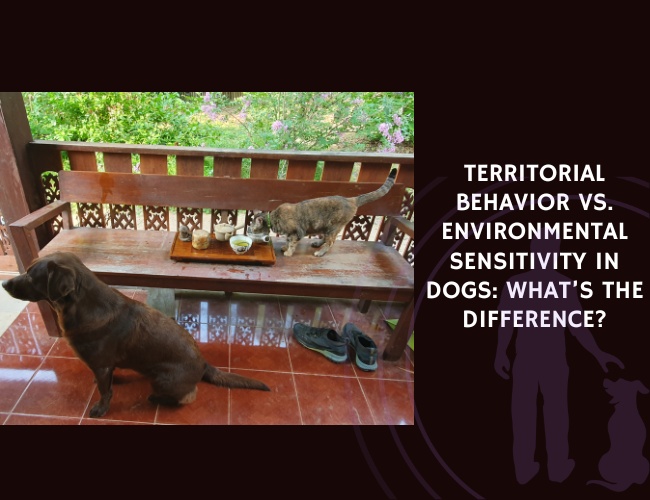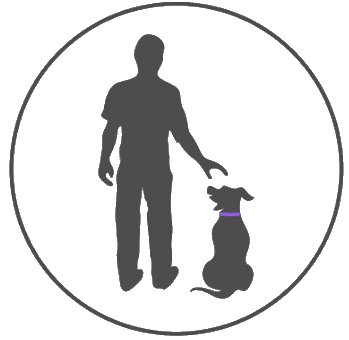Traditional Command-Response Training: An Overview
Definition and Historical Context of Command-Response Training Methods
Command-response training, also known as traditional obedience training, has its roots in military and working dog training. This method relies on a clear, hierarchical structure where the handler issues commands that the dog is expected to follow promptly and precisely. The basic premise is simple: the trainer gives a command, and the dog responds correctly or faces correction.
Historically, this approach emerged from a need for reliability and control in situations where a dog’s performance could be critical, such as in police work, military operations, or agricultural tasks. Dogs were trained to respond to commands promptly to ensure safety, efficiency, and effectiveness in their roles.
Common Practices and Assumptions in Traditional Training Approaches
Command-response training typically employs a range of tools and techniques designed to reinforce the dog’s compliance with commands. Some common practices include:
- Positive Reinforcement: Offering rewards such as treats or praise when the dog obeys a command.
- Negative Reinforcement: Removing an unpleasant stimulus when the dog shows the desired behavior.
- Positive Punishment: Introducing an unpleasant stimulus to discourage unwanted behavior.
- Negative Punishment: Withholding a reward to decrease the likelihood of undesirable behavior.
A fundamental assumption in these approaches is that dogs naturally seek to please their handlers and will learn to repeat behaviors that are rewarded and avoid those that are punished. This method often emphasizes consistency and repetition to instill obedience.
The Emphasis on Obedience Over Communication
One of the primary criticisms of traditional command-response training is its heavy focus on obedience at the expense of communication. This approach prioritizes the trainer’s intent and the dog’s compliance, often overlooking the dog’s own social and communicative capabilities.
This emphasis on obedience can lead to several issues:
- Behavior Versus Understanding: Training centers on the dog’s ability to perform specific actions rather than fostering mutual understanding between dog and handler.
- Suppression of Natural Behaviors: Strict adherence to commands can suppress the dog’s instinctual behaviors and expressions, which are crucial for their well-being and social interactions.
- Stress and Anxiety: The pressure to comply can create stress and anxiety in dogs, particularly when punishments are used to enforce obedience.
As we begin to understand more about canine psychology and the ways dogs naturally communicate, it becomes increasingly clear that command-response training may not always align with what is best for the dog’s overall welfare. Moving forward, a broader perspective on training that incorporates an appreciation of natural canine behaviors and communication patterns is essential.
Understanding the historical context and typical practices of command-response training provides valuable insight into why these methods were prevalent and how they shaped human-dog interactions. However, modern dog training is evolving, and a growing emphasis on communication and relationship-building is paving the way for more holistic approaches.
As we transition to exploring natural canine communication patterns in the subsequent chapter, it is worth considering how understanding these patterns can enrich our approach to training and deepen the bond between humans and their canine companions.
Natural Canine Communication Patterns
How Dogs Naturally Communicate with Other Dogs and Humans
Understanding how dogs naturally communicate is essential for building a strong relationship with our canine companions. Dogs are social animals with a rich tapestry of communication methods that they use to interact with both other dogs and humans. This communication is mostly non-verbal but highly effective in conveying a wide range of emotions, intentions, and information.
Dogs primarily use three types of communication:
- Vocalizations: Barking, whining, growling, and howling are ways dogs express themselves verbally. Different sounds convey different messages, such as warning of danger or expressing excitement.
- Body Language: This is perhaps the most significant form of communication in dogs. From the position of their ears and tail to their overall posture, dogs use their bodies to signal their feelings and intentions.
- Scent Marking: Dogs have a finely tuned sense of smell and leave scent marks to communicate with other dogs. This includes marking territory, indicating sexual availability, and leaving information about their identity.
The Role of Body Language and Non-Verbal Cues in Dog Communication
Body language plays a crucial role in how dogs communicate. Observing and interpreting these cues can help humans understand what their dogs are feeling and trying to convey.
Body Posture
- Relaxed Posture: A relaxed dog will have a loose stance, with its weight evenly distributed, ears and tail in a neutral position.
- Alert Posture: When something catches a dog’s attention, it will stand tall, with ears forward, tail up, and eyes focused.
- Defensive or Fearful Posture: A fearful dog often exhibits a lowered body posture, with tail tucked, ears back, and avoidance of eye contact. The dog might also show piloerection, where the fur stands up to make the dog appear larger.
- Aggressive Posture: An aggressive dog may display a rigid stance, with ears forward, tail up and stiff, and direct eye contact. This posture can quickly escalate to biting if not managed appropriately.
Facial Expressions
Dogs also use their facial expressions to communicate:
- Relaxed and Open Mouth: Indicates a calm and happy dog.
- Closed Mouth, Lips Pulled Back: May indicate fear, anxiety, or submission.
- Baring Teeth and Snarling: Typically a warning to back off and can precede aggressive behavior.
Tail Movements
- Wagging Tail: Often interpreted as a sign of happiness, but the speed and direction of the wag can indicate different emotions.
- Slow Wag: Indicates uncertainty.
- Fast Wag: Usually associated with excitement or agitation.
- Low Wag: Submissive or anxious.
- High Wag: Alert.
The Importance of Allowing Dogs to Express Natural Behaviors
Permitting dogs to express their natural behaviors is vital for their well-being. Engaging in activities that come naturally to them can reduce stress and enhance their quality of life. Dogs have instinctual needs that must be met through everyday activities:
- Social Interaction: Dogs are pack animals and require regular interaction with other dogs as well as with humans.
- Exploration: Giving dogs the opportunity to sniff around and explore their environment helps satisfy their natural curiosity and sensory needs.
- Social Play: Through social play, dogs not only exercise but also practice social skills and release pent-up energy.
- Chewing and Digging: These behaviors are natural to dogs and help relieve stress and boredom.
Encouraging these natural behaviors helps support a dog’s mental and physical health. Suppressing them, as seen in some command-based training methods, can lead to frustration and anxiety.
By recognizing and respecting the natural communication patterns and behaviors of dogs, we can foster a deeper understanding and improve our interactions with them. This approach not only enhances the human-dog relationship but also contributes to the overall well-being of our furry friends.
The Limitations of Command-Based Training
Impact on Dogs’ Natural Communication Abilities
Command-based training often emphasizes obedience at the expense of recognizing and respecting dogs’ natural communication abilities. In this method, dogs are frequently instructed to perform specific actions in response to human commands, often disregarding their intrinsic communication tendencies. This can lead to suppression of natural signals such as body language and vocalizations that dogs use to interact with humans and other dogs.
For instance, dogs communicate a range of emotions and intentions through body postures, ear positions, tail movements, and vocal sounds. Traditional command-response training, which demands immediate compliance, might suppress these behaviors, limiting dogs’ opportunities to express themselves naturally. This can hinder their ability to communicate effectively in social situations, potentially leading to misunderstandings and conflicts.
Potential Stress and Anxiety from Strict Command Enforcement
The enforcement of strict obedience can also contribute to stress and anxiety in dogs. Frequently, traditional training methods use punitive measures to correct undesired behaviors or non-compliance. This approach can create an environment of fear and tension, where dogs may become anxious about making mistakes.
Dogs subjected to constant correction and commands may develop behavioral issues such as timidity, aggression, and avoidance. The stress associated with command-based training can also manifest in physical symptoms, including digestive problems, excessive licking, and self-destructive behaviors like chewing furniture or scratching doors and floors.
Moreover, forcing a dog to obey commands without room for natural expression can impede their mental and emotional well-being. Dogs, like humans, require a balance between structure and freedom to thrive. The relentless pressure to comply with commands can inhibit their playful and exploratory instincts, critical components of a happy and healthy canine life.
Reduced Opportunity for Dogs to Make Autonomous Decisions
One of the most significant limitations of command-response training is the lack of opportunity for dogs to exercise autonomy and make decisions. Autonomy is an essential aspect of a dog’s mental stimulation and well-being. When dogs are continually directed and corrected, they receive fewer opportunities to engage in behaviors that come naturally to them, such as exploring their environment, engaging in social interactions, and problem-solving.
Command-based training often leads to dependency, where dogs wait for human commands instead of acting on their initiative. This can stifle their curiosity and inherent problem-solving skills. In contrast, training methods that allow dogs to make decisions and learn from their environment can enhance cognitive function, boost confidence, and promote a more well-rounded pet.
By recognizing and accommodating dogs’ need for autonomy, trainers can encourage more natural and satisfying interactions. Allowing dogs to express their preferences and engage in self-directed activities can foster a sense of achievement and fulfillment, significantly improving their quality of life.
Transition to the Next Topic
Understanding these limitations highlights the need for exploring more holistic and dog-centered training approaches that consider the natural behaviors and communication patterns of dogs. Recognizing the importance of mutual understanding and responsive communication can significantly enhance the human-dog relationship, paving the way for more advanced and empathetic training methodologies.
Understanding Dog-Human Communication Dynamics
Dogs’ Ability to Interpret Human Social Cues
Dogs have an exceptional ability to interpret human social cues, a skill that has been honed through thousands of years of domestication. They are highly attuned to our body language, facial expressions, and tone of voice. This sensitivity allows them to respond appropriately to a wide range of human emotions and actions. For instance, dogs are capable of recognizing human gestures such as pointing, which indicates where to go or where attention should be focused. They can also detect changes in human posture and movement, which can signify different intentions or states of mind.
Moreover, dogs are adept at understanding the emotional states of humans. They can sense when we are happy, sad, anxious, or angry and often adjust their behavior accordingly. This ability is partly due to their keen observation skills and partly due to the unique bond they share with humans. The mutual evolution of dogs and humans has led to a deep-rooted understanding that facilitates effective communication between the two species.
The Importance of Context in Dog-Human Interactions
Context plays a crucial role in dog-human interactions. Dogs do not interpret cues in isolation; they consider the entire context of the situation. This means that the environment, previous experiences, and current emotional states all influence how a dog perceives and responds to a given stimulus. For example, a dog might react differently to a stranger approaching while on a walk in a familiar neighborhood compared to an unfamiliar setting.
Understanding the importance of context can help humans communicate more effectively with their dogs. For instance, a command given in a calm and familiar environment is more likely to be followed than the same command given in a chaotic or stressful situation. Being aware of the contextual factors that affect a dog’s behavior can lead to more successful interactions and a stronger bond between dog and human.
Building Mutual Understanding Through Responsive Communication
Building a strong and respectful relationship with a dog requires responsive communication. This approach involves recognizing and responding to the dog’s signals and adjusting human behavior accordingly. It contrasts with traditional command-based training, where the focus is often on enforcing obedience rather than fostering a two-way conversation.
Responsive communication emphasizes the importance of listening to the dog’s cues and responding in a way that meets their needs and respects their natural behaviors. For example, if a dog shows signs of anxiety or discomfort, a responsive approach would involve addressing the underlying cause of the distress rather than simply commanding the dog to stop the unwanted behavior.
This method not only helps in addressing behavioral issues more effectively but also strengthens the bond between the dog and the human. A relationship built on mutual respect and understanding is more fulfilling for both parties and leads to a more harmonious coexistence.
Recognizing the limitations of traditional command-response training and understanding the dynamics of dog-human communication can pave the way for more holistic and dog-centered training approaches. These approaches focus on fostering mutual understanding and respect, ultimately enriching the human-dog relationship.
Alternative Training Approaches
Methods that Incorporate Natural Dog Behavior and Communication
Traditional command-response training methods often emphasize obedience over communication. However, alternative approaches are gaining popularity for their integration of natural dog behavior and communication. Such methods recognize the importance of understanding and respecting dogs’ instinctual behaviors, and use them as a foundation for training.
Positive reinforcement is a primary technique in these methods. It involves rewarding desired behaviors, which encourages dogs to repeat them. This approach leverages the natural desire of dogs to seek out pleasant experiences and avoid unpleasant ones. For instance, a dog performing a desired action, like sitting or staying calm, is rewarded with treats, praise, or playtime. This not only reinforces good behavior but also strengthens the bond between dog and owner.
Interactive play and enrichment activities are also integral to these training methods. Activities like puzzle toys, scent games, and agility courses cater to dogs’ natural behaviors such as foraging, hunting, and exploring. Incorporating these activities into training sessions allows dogs to use their natural skills and keep their minds engaged, which can lead to reduced behavioral problems stemming from boredom or frustration.
Balancing Structure with Behavioral Freedom
One of the main criticisms of command-response training is its rigidity. Alternative training methods aim to strike a balance between providing structure and allowing behavioral freedom. Structure is important for safety and basic compliance, but it should not suppress a dog’s natural inclinations.
Training sessions should be structured but flexible, allowing for spontaneous behaviors. For example, rather than issuing strict commands, owners can encourage dogs to offer behaviors by setting up scenarios that naturally lead to desired actions. If a dog enjoys fetching, training can involve hiding toys for the dog to find and return, thereby blending training with play.
Freedom for dogs to make choices is also crucial. Allowing dogs to choose between different behaviors and rewarding the appropriate ones can foster problem-solving skills and enhance their ability to communicate effectively with humans. This choice-based training inherently teaches dogs self-control and cooperation, rather than mere compliance.
Enhancing the Human-Dog Relationship Through Mutual Understanding
The ultimate goal of these alternative training methods is to enhance the human-dog relationship through mutual understanding. Unlike command-response training, which can create a hierarchical dynamic, these approaches promote a partnership where both parties are active participants.
Observing and interpreting dogs’ body language and vocalizations are fundamental to this approach. Dogs communicate a plethora of information through their posture, tail movements, and facial expressions. Understanding these cues allows owners to respond appropriately, whether to calm an anxious dog or engage with a playful one.
Additionally, consistent and calm communication from the owner reinforces trust and reliability. Owners who are responsive and adaptive to their dogs’ needs and signals create an environment where dogs feel secure and understood. This fostered mutual understanding leads to a more harmonious and respectful relationship.
These alternative training approaches provide a more holistic way to engage with and train dogs. By blending natural dog behavior with structured guidance and promoting mutual understanding, they create a more humane and effective way to build a strong, cooperative bond between dogs and their owners.
As we continue to evolve in our understanding and training of dogs, these methods point toward a more informed and empathetic approach, laying the groundwork for future advancements in dog training.
Future Directions in Dog Training
Emerging Research on Dog Psychology and Communication
As the field of dog training evolves, a growing body of research is shedding light on the intricate psychological and communicative abilities of dogs. Recent studies have emphasized the importance of understanding canine cognition, emotional states, and social behaviors. This research is pivotal in debunking traditional training myths and fostering more humane and effective training methodologies.

One key area of focus is the cognitive abilities of dogs. Research has demonstrated that dogs possess remarkable problem-solving skills and emotional intelligence. They are capable of interpreting human gestures, facial expressions, and vocal tones. These findings stress the need for training methods that appeal to dogs’ cognitive strengths rather than solely focusing on obedience through command-response techniques.
Additionally, studies have highlighted the sensitivity of dogs to human emotions and social cues. This sensitivity suggests that a more nuanced, communicative approach may lead to a stronger human-dog bond. By paying attention to these insights, trainers can devise strategies that enhance the relationship between dogs and their owners.
Integrating Scientific Findings into Training Methods
The integration of scientific research into practical training methods marks a significant step forward. Trainers and handlers are increasingly adopting evidence-based practices that align with the natural behaviors and cognitive abilities of dogs.
- Positive Reinforcement: This technique, which rewards desirable behaviors, is grounded in the understanding that dogs learn more effectively through positive experiences. Positive reinforcement encourages enthusiasm and willingness to learn, reducing the stress and anxiety often associated with punitive measures.
- Interactive Play: Incorporating play into training sessions taps into dogs’ natural instincts and fosters an enjoyable learning environment. Interactive play helps build trust and enhances communication, making training sessions more effective and enjoyable for both dogs and humans.
- Environmental Enrichment: Providing mentally stimulating activities and varied experiences caters to dogs’ cognitive and emotional needs. This approach not only improves their well-being but also promotes better behavior, as mentally satisfied dogs are less likely to engage in destructive activities out of boredom.
Moving Towards More Dog-Centered Training Approaches
The transition towards dog-centered training approaches is a notable trend in modern dog training. This shift emphasizes mutual respect, understanding, and autonomy for dogs, moving away from rigid command-based systems.
A dog-centered training model recognizes the individuality of each dog and tailors methods to their unique needs and communication styles. It incorporates elements such as:
- Autonomous Decision-Making: Allowing dogs the freedom to make choices within safe boundaries helps foster confidence and reduces stress. Dogs are more likely to exhibit positive behavior when they are not constantly under rigid control.
- Contextual Learning: Training in various environments and situations ensures that dogs generalize desired behaviors across different contexts. This method respects the dog’s need to understand and navigate diverse scenarios, leading to more reliable behavior.
- Empathy and Respect: Training that prioritizes empathy considers the dog’s emotional state and physical comfort. This approach nurtures a trusting relationship, promoting cooperation and communication.
Transition
In conclusion, the future of dog training lies in embracing scientific insights and developing humane, effective, and dog-centered training approaches. For those dedicated to enriching the human-dog relationship, it’s essential to stay informed about the latest research and continually adapt practices to ensure the well-being and happiness of our canine companions.
Following this trajectory promises a more harmonious and fulfilling partnership between humans and their beloved dogs.

